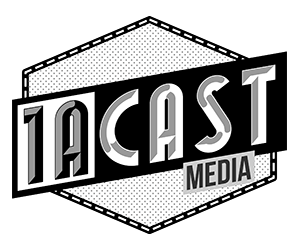The United States of America, which had become a free constitutional republic by overcoming England in the Revolutionary War of 1775-1783, found itself at war with England again, and nearly overcome, in the War of 1812.
 A major, decisive battle took place when the English fleet bombarded Fort McHenry on the night of September 13, 1814. Fort McHenry, over which a huge American Flag flew, guarded the Chesapeake Bay harbor. It stood between the English Fleet sailing down the Chesapeake Bay and their target, Baltimore, MD. When night fell, the English war ships let loose a horrific bombardment The night sky was lit up by rockets arching toward McHenry. Powerful bombshells exploded, many in the air.
A major, decisive battle took place when the English fleet bombarded Fort McHenry on the night of September 13, 1814. Fort McHenry, over which a huge American Flag flew, guarded the Chesapeake Bay harbor. It stood between the English Fleet sailing down the Chesapeake Bay and their target, Baltimore, MD. When night fell, the English war ships let loose a horrific bombardment The night sky was lit up by rockets arching toward McHenry. Powerful bombshells exploded, many in the air.
 It happened that Francis Scott Key, then a young American lawyer, was on an English warship during the bombardment of Fort McHenry that night of September 13. 1814. Key, with the approval of President James Madison, was on board to try to negotiate the release of a friend whom the English had taken prisoner. Key’s negotiations were successful. But the English, concerned that he might be able reveal their imminent night attack on Fort McHenry, refused to allow him to leave the ship.
It happened that Francis Scott Key, then a young American lawyer, was on an English warship during the bombardment of Fort McHenry that night of September 13. 1814. Key, with the approval of President James Madison, was on board to try to negotiate the release of a friend whom the English had taken prisoner. Key’s negotiations were successful. But the English, concerned that he might be able reveal their imminent night attack on Fort McHenry, refused to allow him to leave the ship.
Therefore, Key witnessed the spectacular bombardment from the deck of the English war ship. Key spent the night pacing the deck, fearing that Fort McHenry and its defenders would be overwhelmed by the massive fire power of the English fleet. But when the dawn came, Fort McHenry still defiantly stood. The battle-tattered American Flag was still flying in the smoke-filled sky. The English gave up the effort to overcome the Americans.
Key, overwhelmed with patriotic emotion on that morning of September 14, 1814, wrote a poem beginning “ O say, can you see, by the dawn’s early light….” Entitled “The Star Spangled Banner,” the poem was published in Baltimore following the Fort McHenry battle. It was enthusiastically received by American patriots, and became even more popular when the words of the “Star Spangled Banner” were fitted to a well-known tune.
More than a century later, by act of Congress in 1931, the “Star Spangled Banner,” became the National Anthem of the United States of America.
Most Americans are familiar with the first verse of the “Star Spangled Banner,” which contains moving patriotic words; but few Americans are familiar with the last verse written by Francis Scott Key, which contains words which would become the American National Motto:
O! thus be it ever, when freemen shall stand
Between their loved home and the war’s desolation.
Blest with victory and peace, may the Heaven rescued land
Praise the Power that hath made and preserved us a nation!
Then conquer we must, when our cause it is just,
And this be our motto: “In God is our trust;”
And the star-spangled banner in triumph shall wave
O’er the land of the free and the home of the brave!
Although every nation has a national anthem, a unique tradition developed by Americans concerning our National Anthem: Americans are the only people in the world who place their hands over their hearts in gratitude and reverence when their National Anthem is played.
That tradition is now codified in law as to proper observance when the United States National Anthem is played (Title 36 U.S. Code Section 301). But it is a tradition which arose from “We, the People…,” from American hearts, not from American law.
May it always be so…in a nation whose freedom has been purchased and preserved by the sacrifices of all those generations of Americans who have served under the Flag, our “Star Spangled Banner.”
[Rees Lloyd is a longtime civil rights lawyer, veterans activist, and member of the Victoria Taft
Tell ’em where you saw it. Http://www.victoriataft.com




